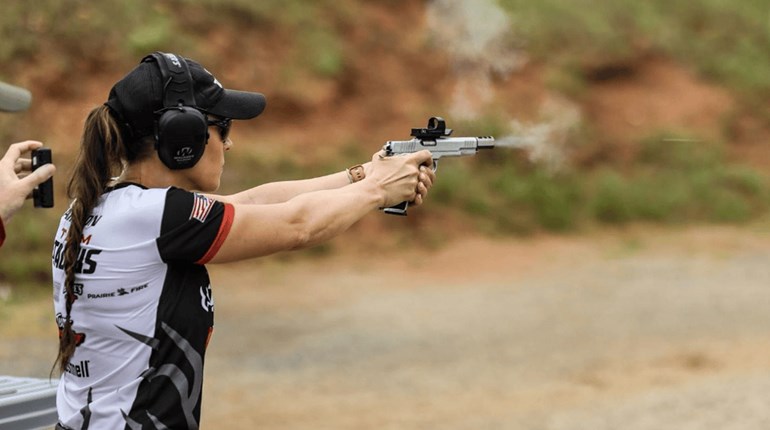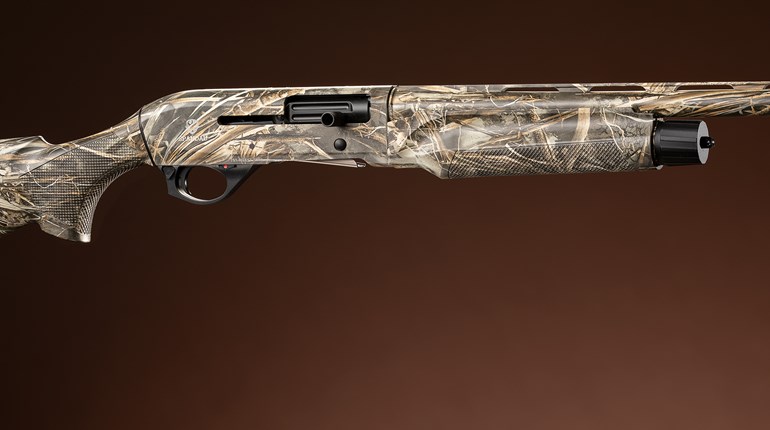
In October, we took a look at the new handgun from Springfield Armory, the Echelon. Personally, when you say Springfield Armory I think of their 1911 lineup of handguns. When researching information on the Echelon, I was reminded that they have been building AR rifles since 2016. Scrolling through the website, I was impressed by their offerings and picked up two of them for review.
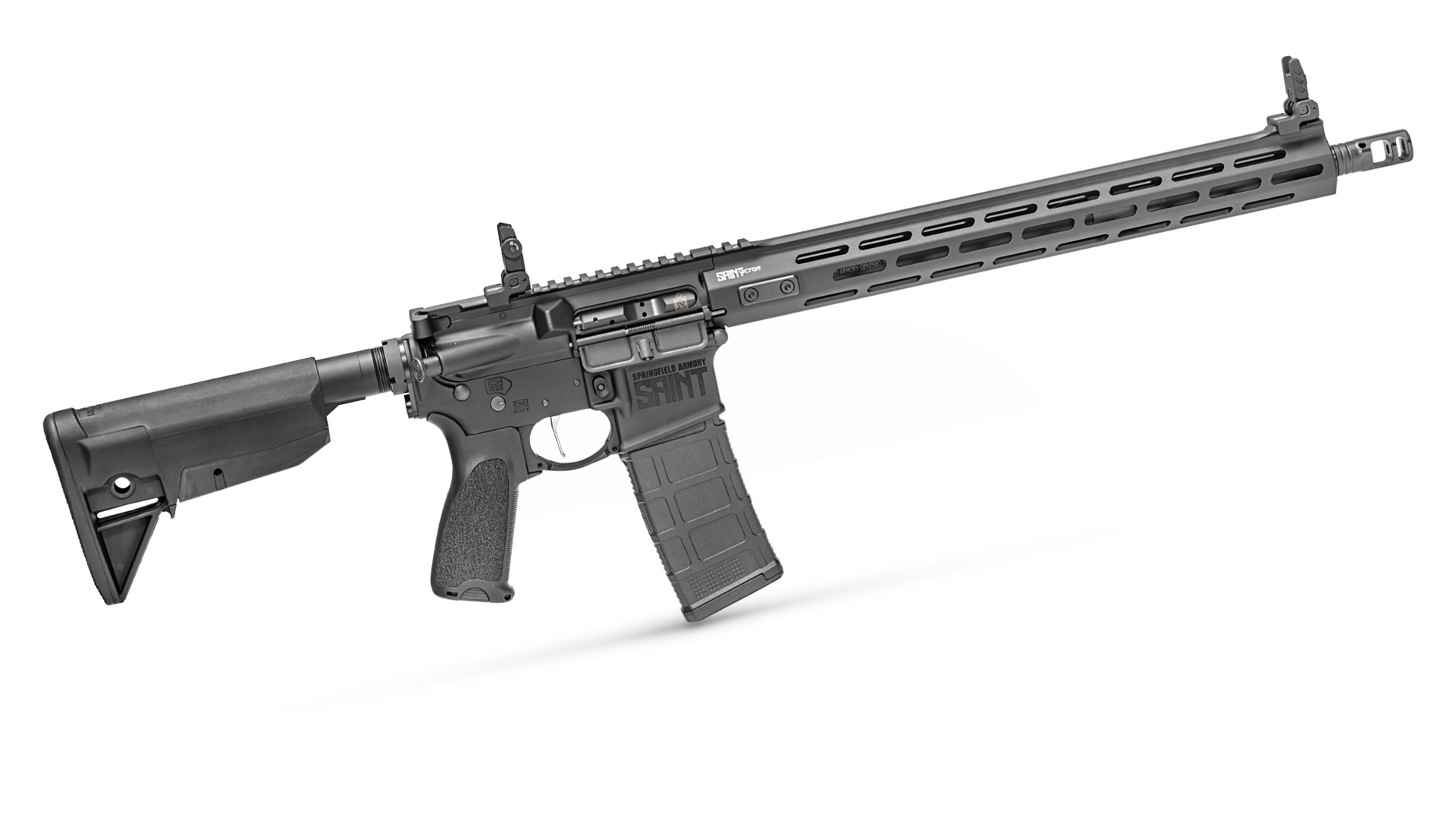
Just like only thinking Springfield Armory is a 1911 manufacturer, many competitors forget that USPSA also has multigun. It is often overlooked, but it is out there. When people think of multigun, I think that they assume it is only using all three platforms, meaning rifle, pistol and shotgun. For the most part that is what is offered as matches; however, under the USPSA multigun rules, standalone rifle matches can be run, as well as rifle- and pistol-only matches. With the IPSC Rifle World Shoot next year it would be great to see some rifle-only matches pop up using the rules that are already available. I think having some two-gun, rifle and pistol would be pretty fun as well.
Oftentimes, current USPSA members don’t jump into multigun due to not understanding the rules, but also considering the cost associated with running all three guns. However, you do not have to go all-in to be competitive. You already have the handgun that will fit in several divisions, so what do you need in a rifle to get started?
SPRINGFIELD ARMORY SAINT VICTOR
This is where some feature-packed mid-level wallet-sensitive rifles come into play. Springfield Armory offers several variants of their AR’s, starting with the Saint, then Saint Victor and, finally, the Saint Edge. In each model there are several different variants with different features. First up for review is the Springfield Armory Saint Victor. With an MSRP of $1,179 (model STV916556T-B5), you are getting a lot of rifle with several practical features that make this a great rifle to get started in competition or just for regular range use.
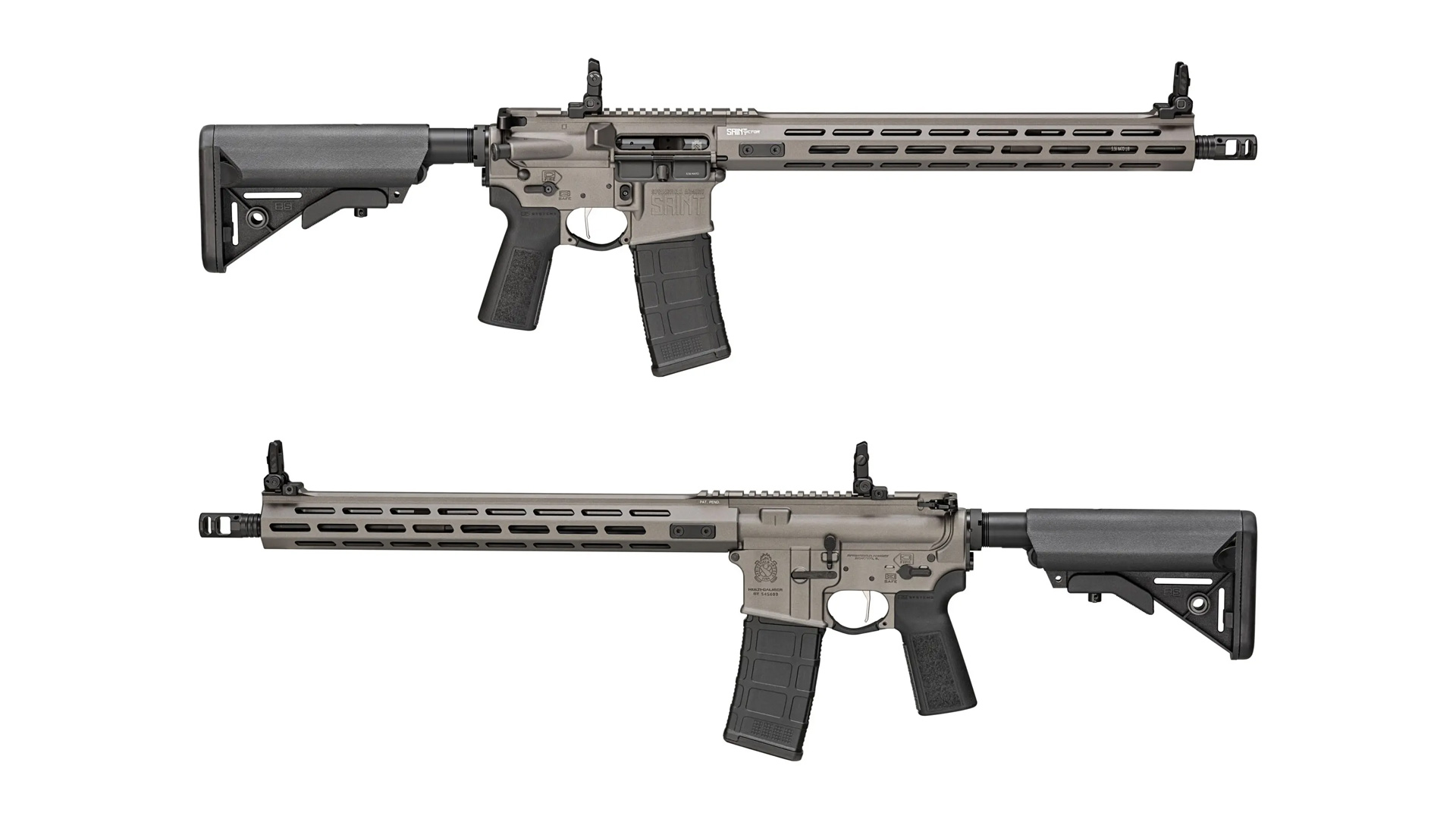
The review model in Tungsten Gray, with black accessories, looks great coming out the soft padded rifle case that it is shipped in with a 30-round Magpul PMAG Gen M3. Chambered in 5.56x45 mm NATO means you can also shoot .223 Remington. The barrel is 16-inch CMV (chrome moly vanadium) finished in Melonite with a 1:8-inch twist.
Springfield’s lower receiver is a forged 7075 T6 aluminum that is a type III and hardcoat anodized, finished in a Tungsten Gray Cerakote and incorporating their Accu-Tite Tension System. The Accu-Tite Tension System is a generous adjustable setscrew that helps to ensure that there is no play between the upper and lower receivers. The receiver extension is milspec and the lower features an ambidextrous safety. As for the trigger, it is a flat GI-style one with a nickel-boron coating.
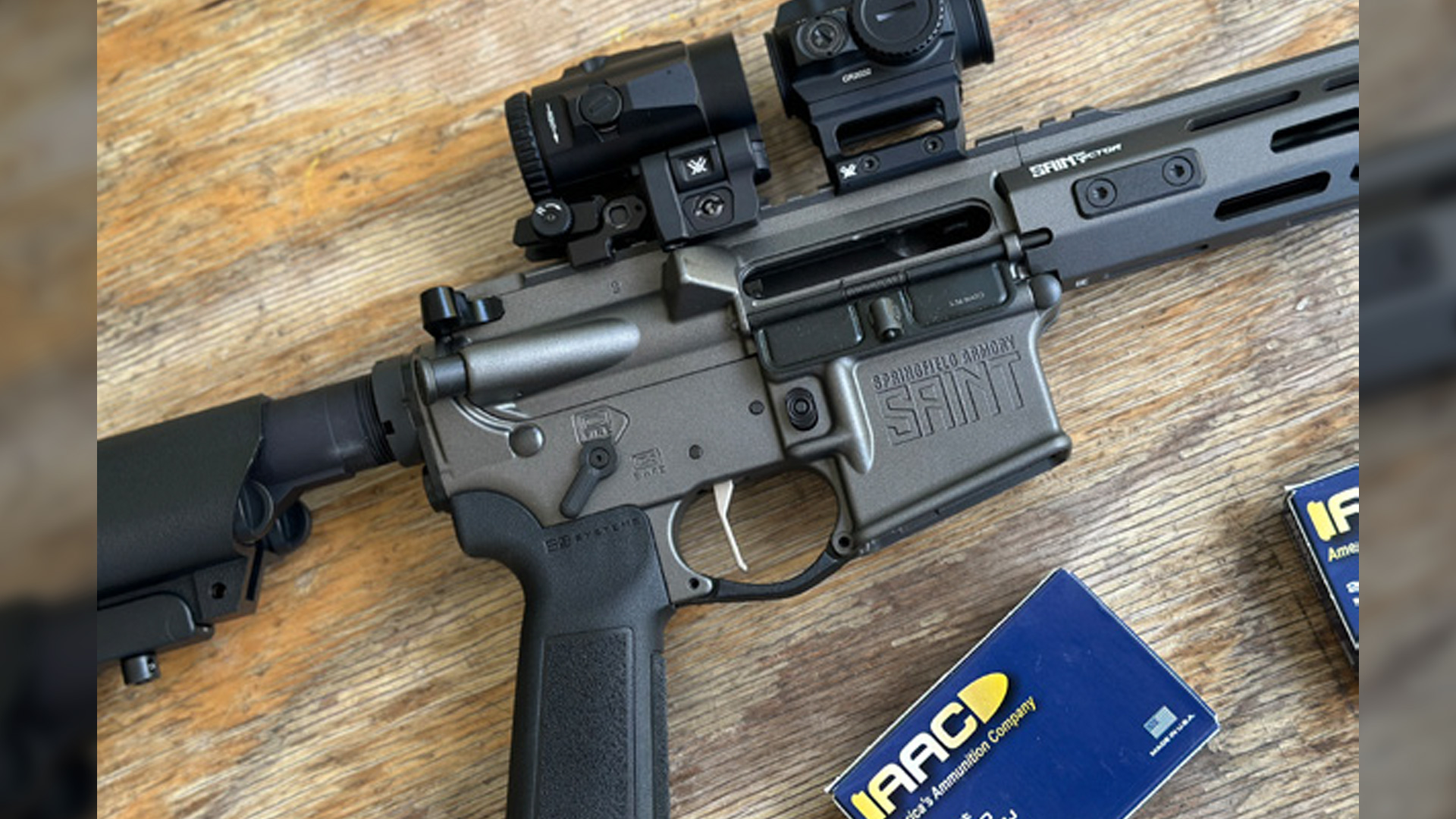
The upper receiver is also in the same Tungsten Gray and forged 7075 T6 aluminum with forward assist and M4 feed ramp. The gas system is a direct impingement mid-length with low profile pinned gas block. The bolt carrier group is an Enhanced M16 with a 9310 steel bolt that is HPT/MPI tested (High Pressure Tested/Magnetic Particle Inspected) and finished in Melonite.
The stock, trigger guard and grip are from B5 Systems. The stock is their Enhanced SOPMOD model, and the grip is the Type 23 P-Grip. The Saint Victor uses a carbine “H” heavy tungsten buffer assembly. The charging handle is GI-style and the receiver end plate is a quick-detach.
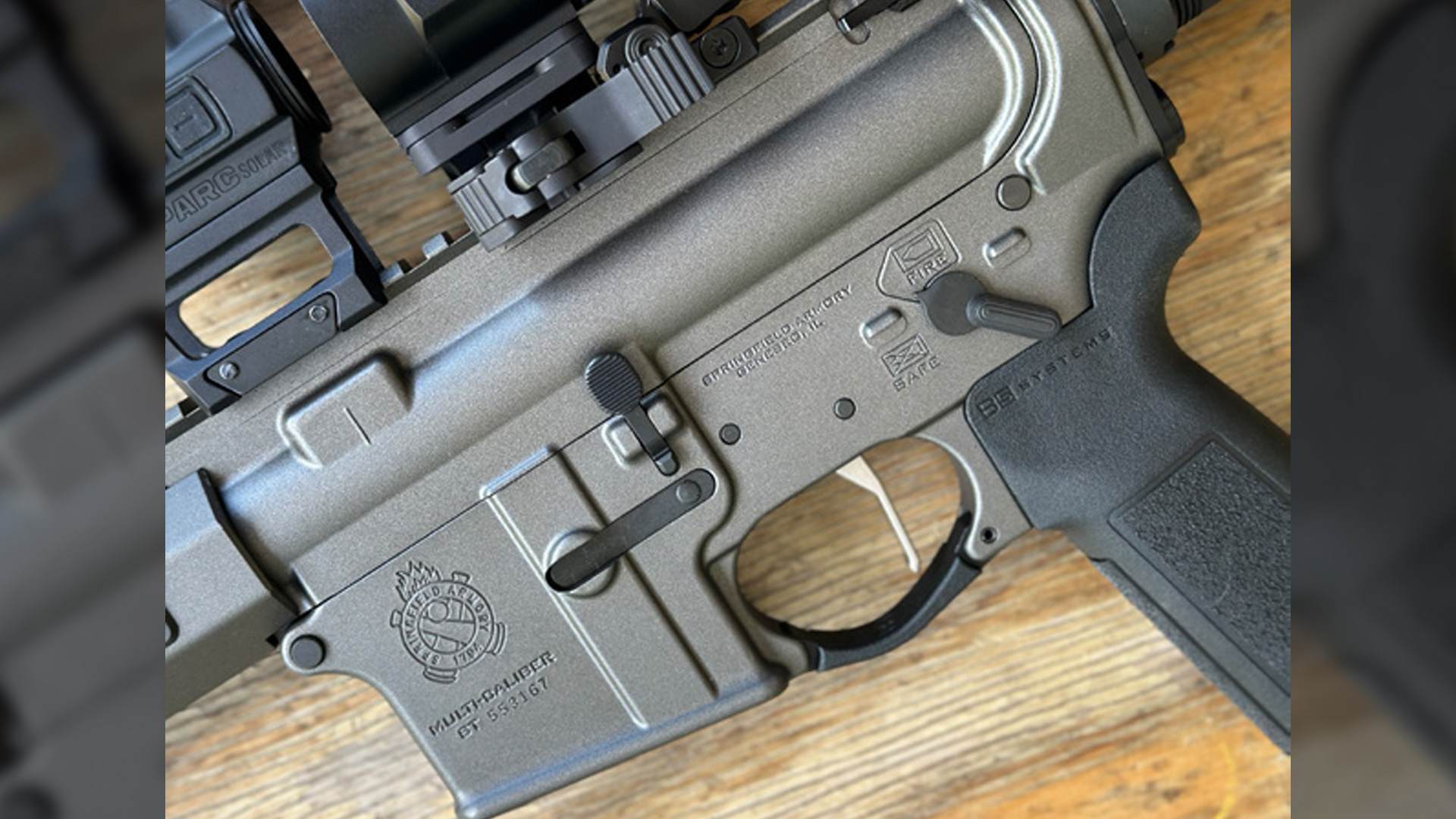
The handguard is aluminum free-float with Springfield Armory’s locking tabs. This features M-LOK and is finished in the Tungsten Gray Cerakote. The barrel has a Springfield muzzle brake. The overall length ranges from 32.25 to 35.5 inches, and total weight is six pounds, nine ounces. Plus, the rifle ships with low-profile spring-loaded adjustable flip-up sights, front and rear.
Before hitting the range, I pulled the bolt carrier group and oiled it up with some Hoppe's Black, and loaded up several P-Mags with AAC 5.56x45 mm. This Springfield received the Vortex SPAR Solar red-dot optic with Micro3x magnifier. The SPARC features a two-MOA dot that is motion-activated. There are 10 daytime illumination settings and two night vision-compatible settings. With it being solar, you have up to 150,000 hours of battery life. The Micro3x is an ultracompact, lightweight magnifier that can be set on an adjustable flip mount with integrated quick release. It can be set at absolute co-witness or lower ⅓ co-witness.
After a quick sight-in, I ran the Saint Victor through over 200 trouble-free rounds. The rifle performed great and had no issue engaging targets from 50 out to 350 yards. The B5 grip and adjustable buttstock with cheekweld made it comfortable and easy to acquire the Vortex optics. At this price, you are getting an AR that is feature-rich and in an attractive package.
SPRINGFIELD ARMORY SAINT EDGE
Where does Springfield Armory go from here on their AR offerings? The Saint Edge rifle is advertised as Springfield’s cream of the crop of ARs. From the website: “It rises to the top with features like a multi-mode gas block for maximized versatility and a free floating handguard for supreme accuracy.”

The Saint Edge’s upper receiver is the same forged 7075 T6 aluminum as the Saint Victor; however, the Edge lower receiver is machined 7075 T6 billet aluminum. The lower receiver on the Saint Edge sports a flared magazine well that is cut up higher for faster access on reloads. The receiver has eye-catching lightening cuts, an ambidextrous safety and integrated quick-detach sling attachment system. The trigger guard is flared and enlarged. The Saint Edge also features the Accu-Tite Tension System.
The Saint Edge trigger is what you would find on higher-end competition rifles. It is Springfield Armory’s Modular Match Trigger with a short rest and is single-stage. The trigger is noticeably lighter and much more crisp than the Saint Victor, with a very nice short reset.
From the Springfield Armory website: “The Saint Edge combines a bevy of premier quality components into a custom-grade 5.56 NATO at a price lower than it would cost you to build yourself.” This model has an MSRP of $1,379 (STE916556B), and just the trigger upgrade and billet lower shows that you are getting exactly what they are advertising.
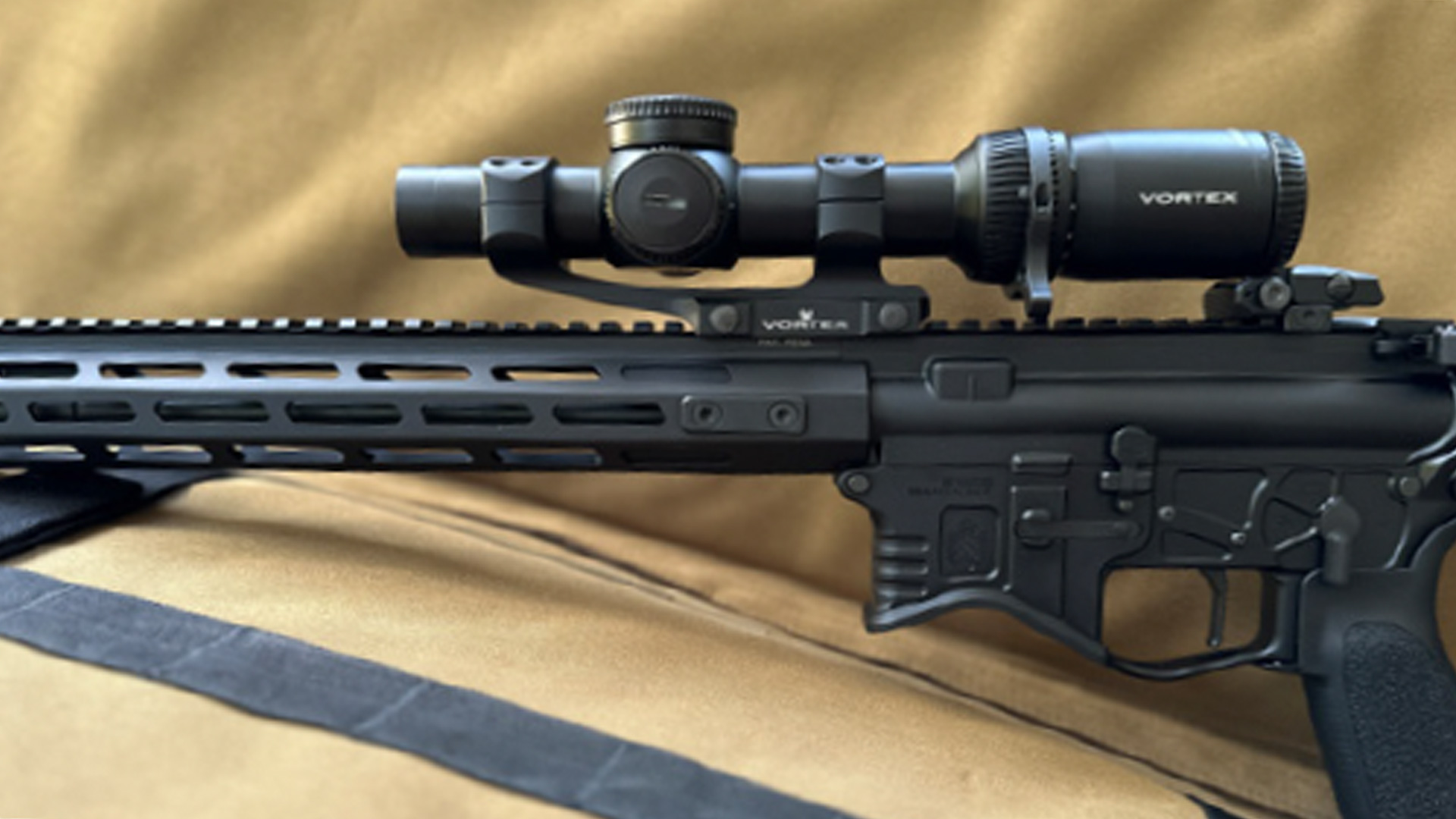
The Saint Edge also has a lightweight, slim-profile 16-inch CMV barrel finished in Melonite with a 1:8-inch twist and Springfield Armory’s Multi-Port muzzle brake. The brake is effective in minimizing muzzle rise and recoil, and was noticeable shooting both models side by side. The Saint Edge uses the same enhanced bolt carrier group as the Victor model, as well as a direct impingement, mid-length low profile pinned adjustable gas block.
The Saint Edge handguard is shorter and has a full rail, compared to the Saint Victor’s rail only being on the receiver. The Edge also features M-LOK with the low profile, spring-loaded, adjustable flip-up sights. The charging handle is Springfield Armory’s midsize with extended lever. The stock and grip are from BCM. The stock is the BCM Gunfighter Mod 0 SOPMOD, and the grip is a Gunfighter Mod 3. In addition, he Saint Edge has the same Carbine “H” Heavy Tungsten Buffer setup as the Victor.
With the shorter handguard, lightened lower receiver and lightweight barrel, the overall weight is six pounds, three ounces, with a 32.5- to 35.75-inch overall length. The Saint Edge ships in the same padded soft rifle case with a 30-round PMAG Gen M3. The Saint Edge delivers on having the premium upgrades right out of the box, especially at this price point.
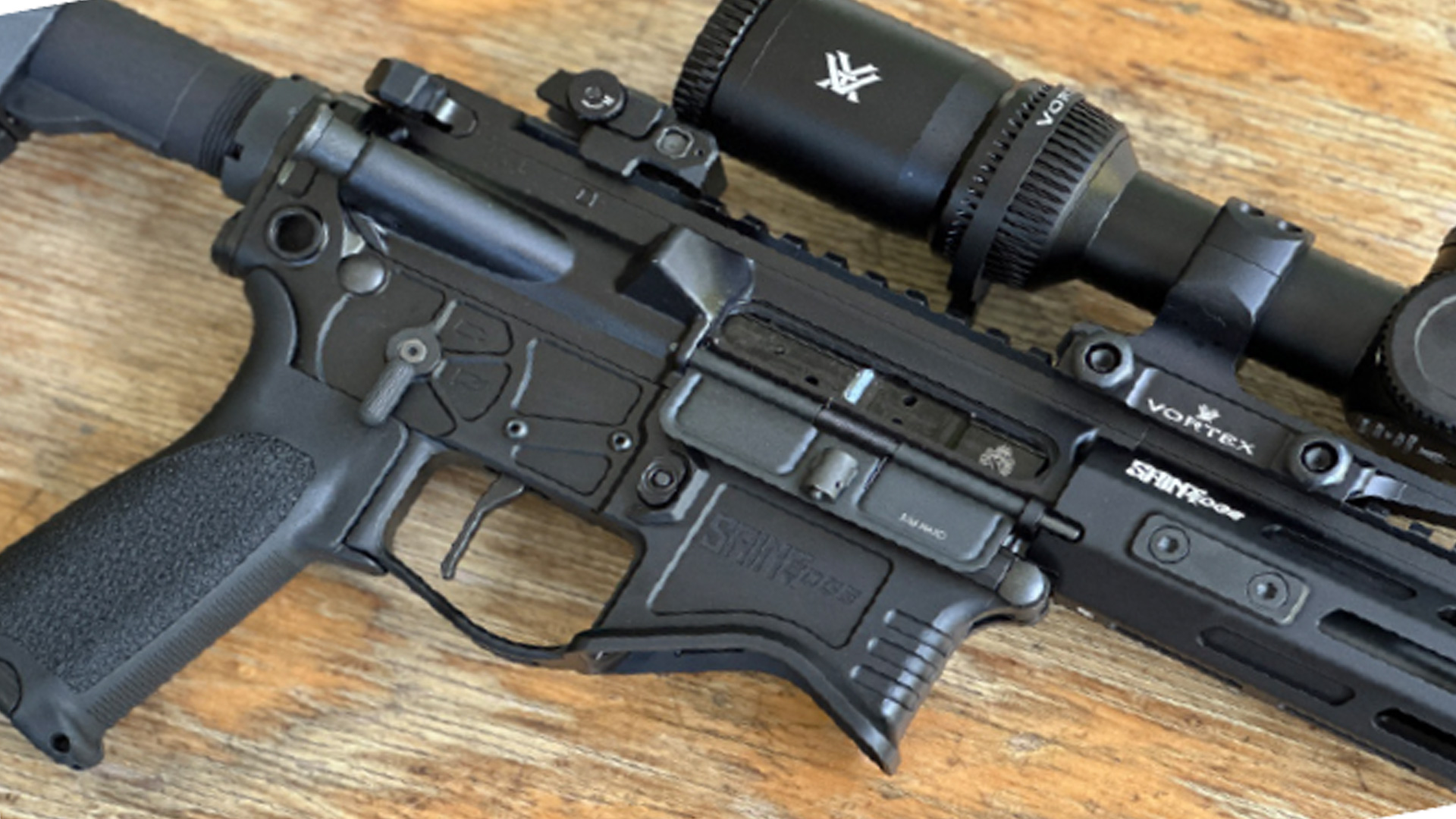
Before hitting the range, I mounted the new Vortex Strike Eagle 1-8x24 FFP scope with a Vortex Sport Cantilever Mount. The Strike Eagle is a LPVO (Low Powered Variable Optic) with the EBR-8 reticle. The EBR-8 MOA is a first focal plane, glass-etched illuminated reticle designed for rapid shooting from point blank out to 600 yards. It ships with the throw lever, flip caps, lens cloth, sunshade and CR2032 battery. The Vortex is made from aircraft-grade aluminum and the company’s ArmorTek ultra-hard, scratch-resistant coating. And of course, it comes with the Vortex VIP lifetime warranty.
For the Saint Edge, I used the same 55-grain AAC ammo, but also had some 69-grain Federal Gold Medal Sierra MatchKing .223 Remington rounds to throw downrange. With the Vortex Strike Eagle mounted, ringing steel that day out to 350 yards (maximum distance I could go at that range) was no problem. At 200 yards, the range has a MGM KYL (Know Your Limits) set up on it. The KYL has five Hex Targets from 10 inches down to two inches. From a seated and bagged position, I had no issues hitting the two-inch Hex with the Saint Edge and Strike Eagle combo.
The Springfield Armory Saint Victor and Saint Edge models are well-built AR rifles that offer a lot of desirable features at reasonable price points. Both rifles were 100 percent reliable from the box with a little more than 200 rounds fired in each of them. Both displayed excellent accuracy combined with the Vortex Optics. The two-tone color on the Saint Victor was well done and made for a good-looking rifle. Both models are ready for the range, but the Saint Edge’s enhanced trigger was a nice feature. If you are in the market for a budget-friendly competition rifle or just one for regular range use, check out the Springfield Armory Saints at springfieldarmory.com. Additionally, check out the Vortex Optics at vortexoptics.com.
Article from the November/December 2023 issue of USPSA’s magazine.















